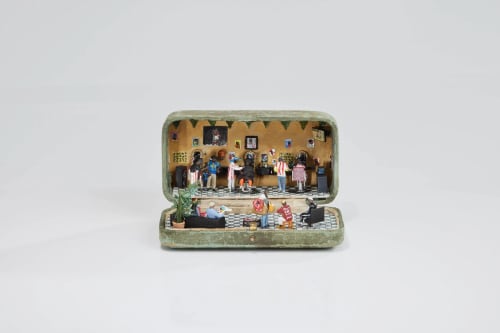Why Is Small Art So Big Right Now?
Years ago, the Canadian collector Bruce Bailey gave artist Curtis Talwst Santiago useful advice: “Be patient,” he said. At the time, Santiago was working on miniatures, making diminutive yet emotionally massive universes that fit inside jewelry boxes. Santiago’s pocket dioramas, still a core of his practice, draw on memories from childhood—you peer upon tiny figurines suspended in time. In one box, just big enough for a pair of cufflinks, a group of Black bathers run and play around on a little beach that is no more than four inches long.
What Bailey meant was that he believed, in time, that art collectors would come to recognize the significance of art regardless of its scale. When I came across Santiago’s work in 2018, it stood out to me in a time marked by a push towards larger and larger paintings. At fairs and in galleries, canvases towered with a cold confidence that felt, at moments, unmerited.
But Bailey was right that things would change. Recently, smaller artworks have become more apparent in galleries and on fair floors. “It’s fascinating to see how perceptions shift, and value is redefined over time,” Santiago told me.
In the world of trend forecasting, there’s a measure called the “high heel index.” Coined by Trevor Davis, a former consumer IBM products economist, the idea is that heel height is correlated with economic upturns and downturns, with periods of austerity correlating with less assertive heels. Could the same be said for the length (and width) of paintings and art?


